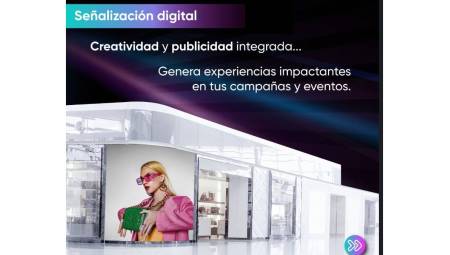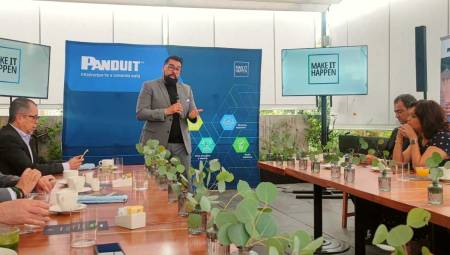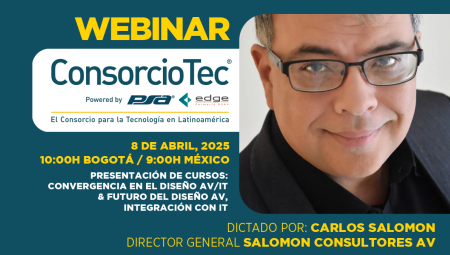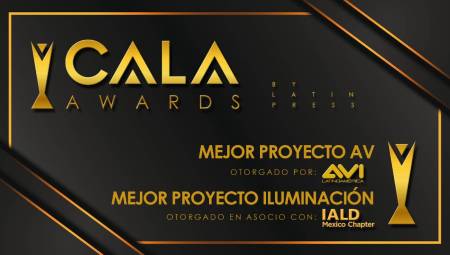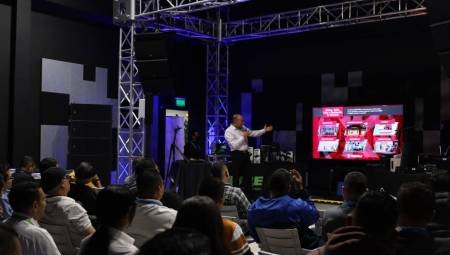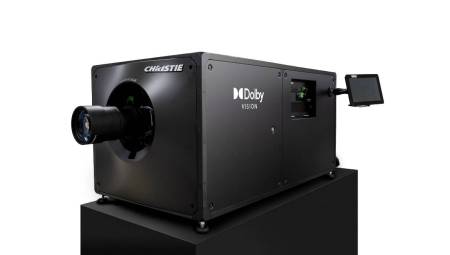 It is not easy to choose a projector if we are not clear about what we need it for. Reproduced in specification sheets, many of the projectors seem more or less the same to us. However, their operation and the quality of the image they produce can make them totally different.
It is not easy to choose a projector if we are not clear about what we need it for. Reproduced in specification sheets, many of the projectors seem more or less the same to us. However, their operation and the quality of the image they produce can make them totally different.
By Juan Carlos Chávez*
The fundamental reason for the differences in the operation of projectors lies in the technology on which they are based, which can be LCD (liquid crystal display), LCoS (liquid crystal on silicon) or DLP® (digital light processing). As if that were not enough, the DLP itself presents two varieties: one chip and three chips.
Three-chip DLP is widely regarded as "the most of the most" in terms of image quality and projection standards. However, in the case of applications that do not pursue the maximum in any specific aspect of operation, single-chip DLP models or LCD technology are usually sufficient. In this article we offer information aimed at helping you choose between the two technologies, whether with your application you are looking for data projection or if you want to view videos, or both.
The ABCs of DLP
All DLP® projectors have a DMD (digital micromirror device) chip covered with square mirrors of microscopic size, with one mirror for each pixel of the projected image. All mirrors rotate between two different angles: an angle that reflects the light from the projector lamp through the lens of the screen generating a bright pixel in doing so; and another angle that reflects the light and moves it away from the lenses towards the internal light absorber, producing a dark pixel on the screen. To show an intermediate gray hue, all mirrors rotate at high speed between both angles thousands of times per second.
On its own, the image that forms the DLP chip looks black and white. To produce color images, two methods are usually used: that of a chip or that of three chips. The three-chip method uses one DMD for each primary color (red, green, blue) that converge optically to produce a single image.
The single-chip approach is limited to using a DLP chip and usually places between the DMD chip and the lamp a disk that rotates at high speed and is called a "color wheel".
The color wheel is divided into several sectors, each of which contains a color filter. The minimum will be one red, one blue and one green. Some projectors add a white segment to boost light production, and others incorporate yellow, cyan and/or magenta. Added in various combinations, the three colors generate rich and colorful images. When turning the wheel, each color illuminates, in quick succession, the DLP chip in a cycle that repeats several times per second. The image displayed on the DLP chip also completes information cycles between red, green and blue in sync with the wheel. The colors cycle at a high enough speed that the eye perceives the image in full color.
Some single-chip DLP projectors use, instead of lamps, LEDs (light-emitting diodes) or a combination of LEDs and lasers. Some of these models do not require a color wheel to perform color cycles, performing that task electronically.
Principles of LCD
LCD projectors use small liquid crystal panels that have been designed to transmit light rather than reflecting light. Usually three panels are used, one for each color. Some projectors use a fourth panel to improve color reproduction. The optical filter components located inside the projector divide the white light from the lamp into the three colors (red, green and blue) then channeling them through their respective panels. The image is formed on a panel altering an electrical signal (voltage) sent in rapid succession to each pixel. The result is either the transmission of light through the LCD panel creating a bright pixel on the screen, or the absorption of light by the panel generating a dark pixel on the screen. Red, green and blue panels surround a prism that ensures that all resulting images are projected in the same place on the screen.
One chip vs. LCD
Data or video content? When choosing a projector for a specific application it is important to consider what type of content we are going to show mainly. Will it consist mostly of data for presentations, video views, or a combination of the two? Both single-chip DLP projectors and LCDs are suitable for both types of content. However, if our main need is the projection of data we will want to have the highest brightness that we can afford with a given budget. In that sense, a DLP projector of a chip designed for fixed installations will probably be the best option. If, on the other hand, our needs are focused on video projection, the color reproduction must be impeccable, so the difference between a DLP projector of a chip and an appropriate LCD model will be minimal.
Image quality
At present, and within a similar price range, there is not much difference in image quality or brightness between a single-chip DLP® projector and an LCD projector. That said, there are a few distinctive features that should be known:
Color Reproduction – All projector designs sacrifice brightness in favor of the depth of projected colors, or the opposite. The choice of one aspect is inevitably to the detriment of the other. The result is that in some projectors the color is deeper or more accurate than in others, depending on what their applications are. The typical commercial or business presentation may demand more brightness under certain ambient lighting conditions; on the other hand, if what we need is to review data or brand standards, color accuracy becomes a priority. Color accuracy also becomes a prerequisite in video projection.
As a general rule, LCD projectors are located in an average term, showing acceptable colors in relation to the brightness they project, while those that are mainly intended for video viewing sacrifice some light projection for the sake of better chromaticism.
Single-chip DLP projectors cover a larger spectrum, ranging from models for presentations with colors simply suited to their function, to models with high color quality designed for video. Some single-chip DLP projectors offer the option to select optimal brightness or greater color accuracy from playback settings.
Color Cycle Speed – In the case of a chip's DLP, the color cycle speed may vary by projector as well as, in some cases, depending on software configurations. In models for presentations the speed of the color cycle tends to be slower than in those intended mainly for video viewing. Therefore, some viewers perceive in the image fleeting multicolored traces ("rainbow") in the case of bright objects, especially when those objects are in motion. However, the perception of those artifacts varies from person to person.
Pixel visibility – LCD projectors have a greater distance between pixels than DLP projectors, a circumstance that makes the separation more visible with the consequent reduction of the visual acuity of the image, something that, although not too important in a presentation, can be fundamental when watching a video. Hence, DLP images are considered more "cinematic" than LCD images.
Lack of convergence – Lack of convergence is the term for an effect you may have noticed in an LCD image: stripes of color in horizontal and vertical lines. The effect appears when the alignment that the images of the three LCD panels must maintain with each other is not precise enough. And while manufacturers go to great lengths to minimize it, the lack of convergence continues to plague some LCD projectors. On the other hand, the DLP projectors of a chip have been designed with a single image creator chip that shows the three colors sequentially, so with a DLP projector of a chip we will be free of the problem of lack of convergence.
What about reliability?
Reliability is just as important as performance, and the two technologies, LCD and DLP on a chip, work well in that regard.
LCD
In the past, projector LCD panels could fail due to a progressive breakdown of ultraviolet (UV) light that is filtered through the lamp. A new technology that operates within the LCD panel itself called inorganic alignment layers has been an important advance by increasing the protection of LCDs against damage caused by ultraviolet light, despite which, this solution is still not the most suitable in 24/7 applications.
One problem with LCD is image retention. If an LCD projector or flat panel displays a static image for a long period of time, the LCD tends to maintain a post-image effect, a kind of ghost image of that static image, which remains visible with the new content already on the screen. Most LCD manufacturers warn of the risk of this type of operation, a problem that can be especially serious in applications that require 24/7 (continuous) operation that accentuates the chances of image retention. When 24/7 operation is required, the DLP projector option is much more advisable.
Single-chip DLP
In the case of DLP, we might think that a DMD chip full of moving mirrors is, in itself, unreliable for its mechanics and movement. However, even though mirrors are movable elements, they are so tiny that the forces involved in their movement are negligible. Tests carried out over many years have shown that DLP chips are highly reliable and long-lived.
A key advantage of DLP technology is that, rather than internally absorbing light in the imaging device to produce black, mirrors are limited to redirecting light to an internal light absorber, which reduces thermal stress on the imaging device (DMD) considerably increasing its life expectancy.
Another traditional concern generated by lamp-based single-chip DLP projectors is that derived from the motor that spins the color wheel. It is an engine similar to those of hard drives and have proven to be of great reliability.
Another aspect to take into account when talking about reliability is that the products of a chip have sealed optics, which helps to eliminate the possible contamination of the panel that usually manifests itself on the screen in the form of dark spots and / or chromatic distortion. On the other hand, it is not uncommon for LCD projectors to require cleaning service.
Conclusion
Single-chip DLP projectors and LCD projectors offer great value in a wide range of applications. In a given price range, products employing one or another technology tend to be similar in performance and performance results. However, while there are fundamental differences between the two technologies, there are applications that, depending on the content — data or video, image quality and reliability — are a better fit for one than the other. In this article we have summarized the most relevant information to help you choose the best option for your application needs.
*Juan Carlos Chávez is Christie's director for Latin America.





